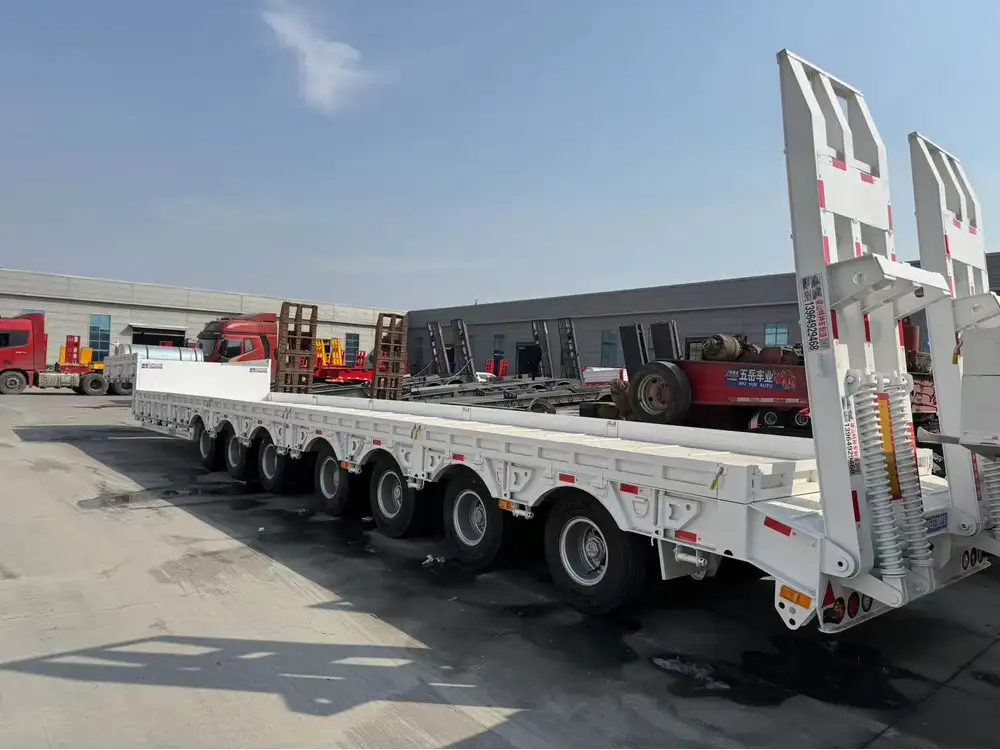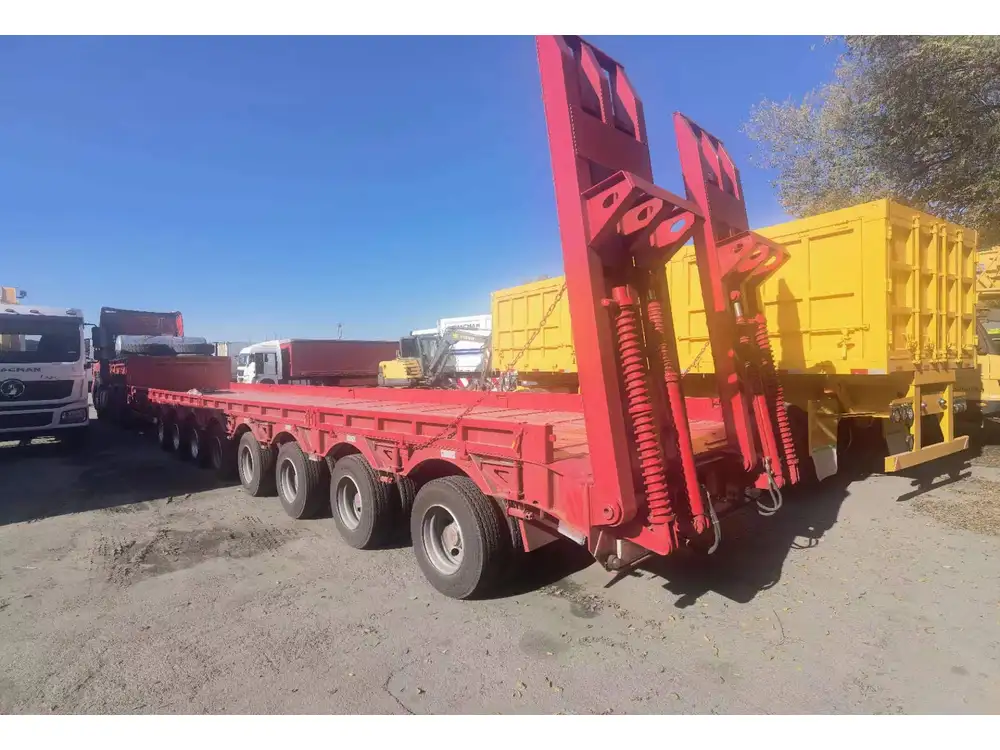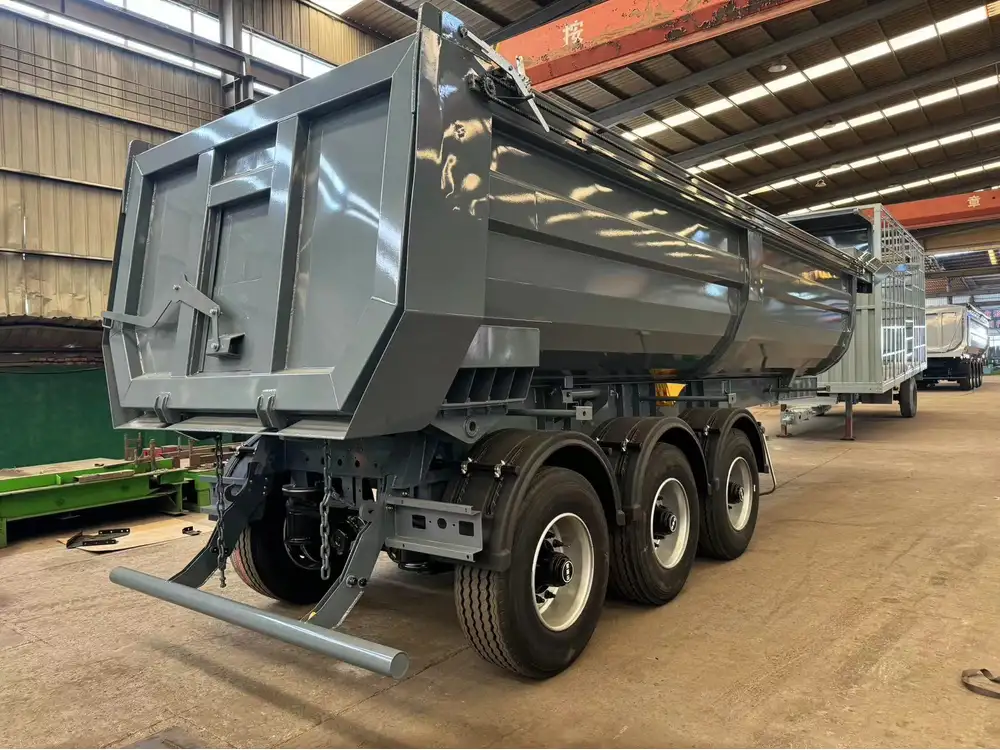Hauling dirt on a flatbed trailer may seem straightforward, yet it requires careful consideration to ensure successful transport. The process involves various factors, including the choice of trailer, loading methodologies, weight distribution, safety regulations, and techniques to enhance efficiency. This guide delves deep into each aspect of hauling dirt on a flatbed trailer, equipping you with the knowledge necessary to achieve optimal results.
Understanding the Basics of Flatbed Trailers
Flatbed trailers are versatile transport vehicles renowned for their open nature, allowing for the easy loading and unloading of various goods, including dirt. Before discussing how to haul dirt, let’s examine the key features that make flatbed trailers the ideal choice for this task.
Key Features of Flatbed Trailers
| Feature | Description |
|---|---|
| Open Design | Facilitates easy loading/unloading without side barriers. |
| Versatile Sizes | Available in multiple lengths and widths to accommodate various loads. |
| Weight Capacity | Can support heavy loads, often exceeding 20,000 lbs, depending on the axle configuration. |
| Accessibility | Allows for crane use and side loading, increasing efficiency and flexibility. |

Types of Flatbed Trailers
When considering which flatbed trailer to use for hauling dirt, it’s important to understand the different types available:
- Standard Flatbed Trailers: Commonly used for general-purpose hauling.
- Drop Deck Trailers: Feature a lower deck height for higher loads while maintaining legal height limits.
- Step Deck Trailers: Designed for maximum height clearance, useful for oversized loads.
- Extendable Trailers: Allow for varying lengths to accommodate larger loads.
Preparing for the Haul: Essential Considerations
Before embarking on your hauling endeavor, you need to prepare adequately. Here are the important steps and considerations:
1. Selecting the Right Flatbed Trailer
The first step in hauling dirt is choosing an appropriate flatbed trailer. Factors influencing your decision include:
- Load Size and Weight: Calculate the volume and weight of dirt to choose a trailer with sufficient capacity.
- Transport Distance: Consider how far you’ll be hauling the dirt, which impacts the choice of trailer type.
- Access Points: Evaluate the loading and unloading locations, ensuring that the trailer can navigate easily.

2. Checking Local Regulations
Different regions have specific regulations regarding load limits, required permits, and safety measures. It’s crucial to understand these regulations to avoid fines and ensure safety. Check with local transportation authorities about:
- Maximum weight permits.
- Road restrictions for oversized loads.
- Requirements for securing loads.
3. Equipment and Tools Needed
To effectively load and secure dirt on your flatbed trailer, gather the necessary equipment:
| Equipment | Purpose |
|---|---|
| Loader or Excavator | For loading dirt onto the trailer. |
| Tarps | To cover the dirt and prevent spillage. |
| Straps or Chains | For securing the load during transit. |
| Weight Scale | To check the total weight of the load. |
| Shovels and Rakes (optional) | For leveling dirt on the trailer. |
Loading Dirt onto the Flatbed Trailer

Step-by-Step Loading Process
- Position Your Trailer: Ensure the flatbed trailer is parked on a level surface to maintain stability during loading.
- Utilize Heavy Equipment: Use a loader or excavator positioned at the pile of dirt. As you load, maintain a steady flow to avoid overloading one side of the trailer.
- Distribute the Load Evenly: Place dirt uniformly across the trailer to promote stability while driving. Aim for a balanced load distribution to avoid swaying during transport.
- Level the Load: Use shovels and rakes, if necessary, to evenly distribute and level the dirt. An uneven load can be dangerous and difficult to transport.
Safety Precautions When Loading
- Wear Personal Protective Equipment (PPE): Hard hats, gloves, and steel-toed boots enhance safety during loading.
- Monitor Weight Limits: Always check the gross vehicle weight limit (GVWR) of the trailer and ensure you do not exceed it.
- Communicate: If working with a team, use hand signals or radios to coordinate movements during loading.
Securing the Dirt Load for Transport
Loading dirt onto a flatbed is only part of the equation; securing the load is equally critical to ensure safety on the road.

Techniques to Secure the Load
- Use of Tarps: Cover the load with a tarp to prevent dirt from blowing off during transport. Ensure that the tarp is securely fastened to avoid flapping.
- Strapping the Load:
- Use ratchet straps or chain binders to secure the dirt tightly.
- Criss-cross the straps over the load for maximum stability.
- Consider an additional layer of straps for heavier loads.
- Utilizing Side Rails: If your trailer is equipped with side rails, ensure that the dirt does not exceed the height of the rails to maintain security.
Best Practices for Securement
- Regularly check the tightness of your straps during long hauls to account for any movement or settling of the load.
- Document the weight and dimensions of the load for reference in case of roadside inspections.
Transporting the Dirt: Driving Tips
Once the dirt is loaded and secured, it’s time to hit the road. Effective driving practices can minimize risks and ensure a smooth journey.

Safe Driving Practices
- Adhere to Speed Limits: Maintain lower speeds, especially on winding or uneven roads.
- Plan Your Route: Choose routes that avoid steep grades or restricted areas for oversized loads.
- Increase Following Distance: Allow extra space between you and the vehicle ahead to accommodate longer stopping distances.
- Perform Regular Checks: Pull over periodically to inspect the load and straps, ensuring everything remains secure.
Monitoring the Road Conditions
Stay attentive to the condition of the road, including:
- Weather Conditions: Rain and snow can make roads slippery; adjust driving accordingly.
- Traffic Patterns: Be mindful of city traffic, which may require more frequent stops.
- Potential Hazards: Watch for construction zones or road debris that could threaten load integrity.
Unloading Dirt from the Flatbed Trailer
When you reach your destination, unloading the dirt efficiently and safely is the next step. Here’s how to do it:

Unloading Techniques
- Position the Trailer: Ensure the flatbed is on firm, stable ground.
- Use Equipment as Needed: Utilize a loader or excavator to lift the dirt from the trailer, especially if dealing with a large volume.
- Control the Flow: As dirt is unloaded, keep it within a designated area to minimize mess.
- Level the Unloaded Dirt: After unloading, use rakes or shovels if necessary to level it out.
Post-Unloading Checks
After unloading, inspect the flatbed trailer for leftover dirt or debris. Regular cleaning will maintain the trailer’s condition and longevity.
Conclusion
Hauling dirt on a flatbed trailer requires a careful and methodical approach to ensure safety and effectiveness. By understanding the essentials—from selecting the right trailer and securing the load to following safe driving practices—you can streamline your efforts and achieve successful dirt transport. Adhering to these outlined steps will not only facilitate a smoother process but also safeguard against potential issues commonly encountered during hauling operations.



